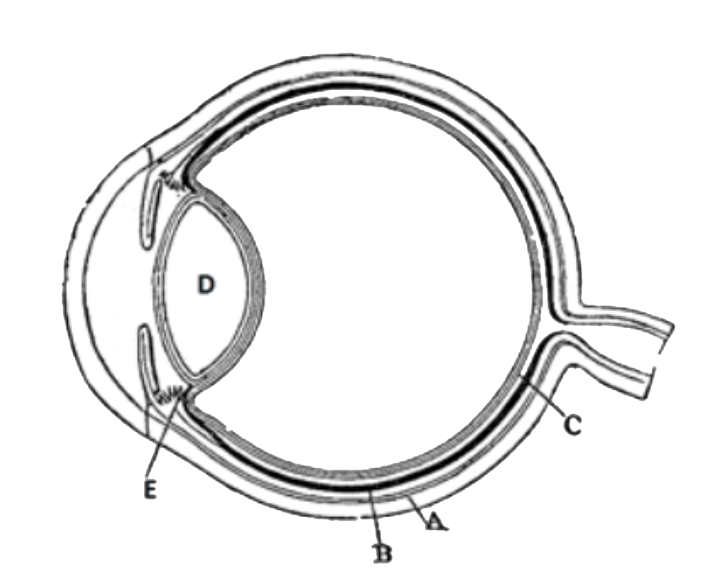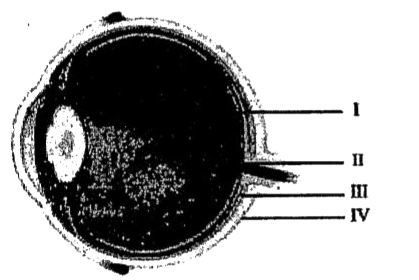The structure of the human eye having there layers of cells are
Cornea
Ciliary body
Sclera
Retina
The correct Answer is:D
To answer the question regarding the structure of the human eye that has three layers of cells, we will analyze the components of the eye and identify the specific structure that meets this criterion.
1. Identify the Structures of the Eye:
- The human eye consists of several key structures, including the cornea, lens, iris, ciliary body, sclera, and retina.
2. Examine the Cornea:
- The cornea is the transparent front part of the eye that covers the pupil and iris. It helps in focusing light but does not have layers of cells. Therefore, it is not the answer.
3. Examine the Ciliary Body:
- The ciliary body contains ciliary muscles that control the shape of the lens and produces aqueous humor. However, it does not consist of three layers of cells.
4. Examine the Sclera:
- The sclera is the white outer layer of the eye, made of dense connective tissue. It provides protection but does not have three layers of cells.
5. Examine the Retina:
- The retina is the innermost layer of the eye and is responsible for converting light into neural signals. It consists of three layers of cells:
- Ganglion Cells: The outermost layer that forms the optic nerve.
- Bipolar Cells: The middle layer that receives signals from photoreceptor cells.
- Photoreceptor Cells: The innermost layer that detects light; there are two types: rods (for low light) and cones (for daylight vision).
6. Conclusion:
- The structure of the human eye that has three layers of cells is the retina. Therefore, the answer to the question is option 4.
- The human eye consists of several key structures, including the cornea, lens, iris, ciliary body, sclera, and retina.
- The cornea is the transparent front part of the eye that covers the pupil and iris. It helps in focusing light but does not have layers of cells. Therefore, it is not the answer.
- The ciliary body contains ciliary muscles that control the shape of the lens and produces aqueous humor. However, it does not consist of three layers of cells.
- The sclera is the white outer layer of the eye, made of dense connective tissue. It provides protection but does not have three layers of cells.
- The retina is the innermost layer of the eye and is responsible for converting light into neural signals. It consists of three layers of cells:
- Ganglion Cells: The outermost layer that forms the optic nerve.
- Bipolar Cells: The middle layer that receives signals from photoreceptor cells.
- Photoreceptor Cells: The innermost layer that detects light; there are two types: rods (for low light) and cones (for daylight vision).
- The structure of the human eye that has three layers of cells is the retina. Therefore, the answer to the question is option 4.
Similar Questions
Knowledge Check
Which of the following labeling in the structure of eyes contains three layers of cells?
 AA – sclearBA – corneaCB – choroidDC – retina
AA – sclearBA – corneaCB – choroidDC – retinaThe innermost layer of the human eye is
AchoroidBcorneaCscleraDretinaThe innermost layer of the human eye is
AChoroidBCorneaCScleraDRetina
The figure illustrates the structure of a human eye. Which part of human eye represents the yellow point

View SolutionWhich of the following structure of the human brain contains neurosecretory cells to produce hormones ?
View SolutionThe innermost layer of the humen eye is
View SolutionThe range of vision of human eye is
View SolutionThe innermost layer of human eye is,
View Solution
